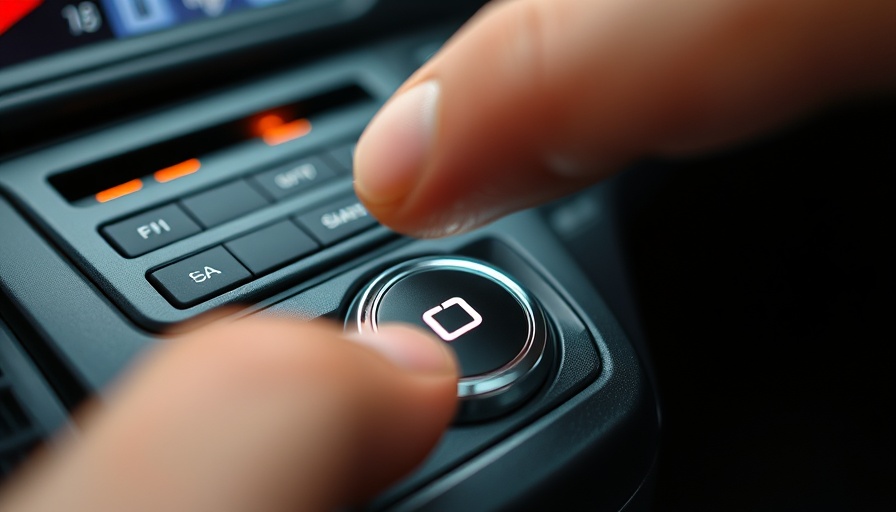
Why Are Some Car Features So Annoying?
In the modern automotive landscape, certain features designed to enhance the driving experience seem to have missed the mark entirely. As technology evolves, many car manufacturers integrate systems that sound promising on paper yet create more headaches than they resolve. These features can be not just distractions but also a cause for significant frustration. Understanding why these inconvenient innovations exist can help consumers navigate their options better.
In '13 Annoying Car Features We Never Actually Wanted,' the discussion dives into the frustrating innovations in modern vehicles, prompting a closer look at their real impacts.
Stop-Start Systems: Are They Really Effective?
At first glance, stop-start systems appear as a practical solution for improving fuel efficiency and reducing emissions. However, the reality is far from it—many users find them more annoying than helpful. The car's engine shuts off at traffic lights, leaving drivers in a lurch when it suddenly revives at the wrong moment. Not only can this be dangerous in stop-and-go traffic, but it often doesn’t yield noticeable savings on fuel. Instead, it can create wear and tear on the vehicle's starter, leading to more repairs over time. It raises the question: why should drivers endure such inconveniences just to flaunt better MPG numbers?
The Problem of Overloading with Screens
With the rise of high-tech vehicles, the proliferation of screens in modern cars has surged. While sophisticated interfaces offer a wealth of information at our fingertips, too many screens can lead to serious distractions. In fact, statistics show that distracted driving is responsible for thousands of fatalities every year. Instead of achieving seamless connectivity, drivers are left struggling to navigate through complicated menus while trying to focus on the road. A simple touchscreen often transforms into a multi-tasking nightmare, blurring the line between convenience and danger.
Keyless Entry: Convenience or Risk?
The advent of keyless entry systems indeed promised comfort, yet they also opened the door for theft. No longer do drivers carry a physical key; instead, they deal with a tiny fob often misplaced in a bag or pocket. The convenience of a push-button start becomes problematic when considering how easily thieves can duplicate these signals. Traditional keys, while seemingly outdated, provide a layer of security that modern systems lack, which leaves many auto owners questioning whether these advancements are truly beneficial.
Auto Parking: Redundancy or Innovation?
Auto parking features can appear high-tech and convenient but often feel unnecessary for drivers who have been parking on their own for years. Many find it more challenging than helpful, particularly when faced with a malfunction. This feature can become a crutch, hindering drivers from honing crucial skills. Additionally, the ambiguity surrounding liability in the event of a mishap raises even more concerns—is it the driver’s fault or the car’s? Sometimes, the age-old manual parking technique proves superior to tech that doesn’t truly enhance the experience.
Gesture Control: A Gimmick That Misses the Mark
Gesture control systems, introduced with great fanfare, often create more confusion than convenience. While the idea of commanding your vehicle with movements sounds appealing, the execution frequently fails. Erratic responses mean drivers can inadvertently trigger unwanted actions, making it more frustrating than helpful. In contrast, the reliability of traditional buttons and knobs, which don’t misinterpret commands, better serves the needs of drivers on the go.
Voice Technology: Frustration Over Convenience
Voice recognition has long been heralded as the future of automotive interaction, but many systems struggle to understand simple commands. Misunderstandings occur frequently, leading to increased distractions when drivers find themselves repeating phrases or getting incorrect responses. The outcomes can turn harmless interactions into annoying detours that complicate the driving process.
As the automotive industry continues to innovate, it’s crucial for manufacturers to consider the practical effects of their advancements. Some features, while visually appealing, often distract from what should be the main focus: safety and ease of driving. Drivers must remain vigilant and informed, weighing the pros and cons of these modern technological integrations. After all, a vehicle should serve as a reliable tool, not an endless source of frustration.
 Add Row
Add Row  Add
Add 




 Add Row
Add Row  Add
Add 

Write A Comment